Matteo Mancuso’s mind-bending technique has taken the guitar world by storm – learn how to increase your fingerpicking speed to nail his extraordinary licks

In this lesson, we are exploring a new avenue for our classical column; this time in the form of a technical exposé of Sicilian fusion guitar prodigy Matteo Mancuso, a name that is relatively new not only to me but to the guitar world in general.
Mancuso is an extremely gifted musician with a vast musical vocabulary when it comes to melodic improvisation over a multitude of styles including jazz, rock, and blues. But this isn’t what has set him apart from his peers. Mancuso has blazed a trail throughout many global guitar communities with his unique approach to achieving breakneck virtuosity on the electric guitar.
And what is this unique approach? Mancuso puts down the guitar pick and instead adopts for a classical plucking technique. Matteo is by no means the first electric guitarist to do so – Mark Knopfler’s famous solo on Sultans of Swing showed what levels of expression can be achieved on electric guitar without a plectrum. And what about American blues guitarist Derek Trucks who combines a bottleneck-fingerstyle combo approach? And we haven’t even mentioned Jeff Beck!
Mancuso started out learning classical guitar in his youth before moving onto electric, but has continued drawing on his classical foundations ever since.
In that short time Matteo has clearly been both musically and technically inspired by his peers, but now takes a high-octane approach to his soloing. He incorporates ergonomics (the cornerstone of classical technique) within his fretting hand for nimbleness and ease of access to notes. But what really gives him access to this elevated speed is the way he incorporates flamenco-style alternating finger patterns in his plucking hand.
He regularly switches to a-m-i for groups of three notes while playing scale-based passages, then switches to a more upright free-stroke position using the full range afforded by p-i-m-a, to ascend and descend through arpeggios and broken chords. He cycles through these three main plucking methods, giving him an almost superhuman ability when it comes to speed.
Our suite of exercises draws on the main aspects of Mancuso’s technique as discussed above but first we will be using an excerpt from Mozart’s Rondo Alla Turca as a study in which to apply these aspects to speedy playing. Good luck!
Technique focus: Less is more
If you slow any melody down enough you will find a tempo where everything feels effortless. Being able to play fast proficiently is about finding that tempo and maintaining the feeling of effortlessness as you slowly increase your speeds. With higher tempos tension can build in the fretting hand, but there is a hack to solve this, called the ‘Click Fix’.
Play all notes with zero fretting-hand pressure, like you’re trying to play harmonics. Once proficient, slowly bring the pressure back into the frets and voila! Your notes should sound clean and feel tension-free!
Study: Mozart’s Rondo Alla Turca (excerpt)
Transcription slow
This excerpt has been chosen as it is a great section of music for bringing together all the technical aspects covered here. Essentially, we are employing Mancuso’s techniques for speedy melodies in his rock-fusion style but in a classical setting.
One general point as you begin learning this is to default to starting each bar i-m-i-m in your plucking hand, only deviating from that ordering when you see it indicated on the music, such as in bars 24 and 40 where it is necessary to adopt a free stroke m-a-p-i cross-string finger pattern to achieve the arpeggiated notes of that bar.
This excerpt has been written to push your alternating finger playing, but if you find you have trouble with tension in your plucking hand, simply bring in more slurs to take some of the heat off a tiring appendage.
Everyone is capable of playing without tension in their plucking hand, but if this is not the case it is usually the sign of an underlying technical habit which needs addressing. Poor technique will often lead to injury, so consulting a professional tutor is a must if you’re struggling.
Exercises video
Exercise 1. Cross-string P-I-M-A with stable fretting-hand shape during shifts
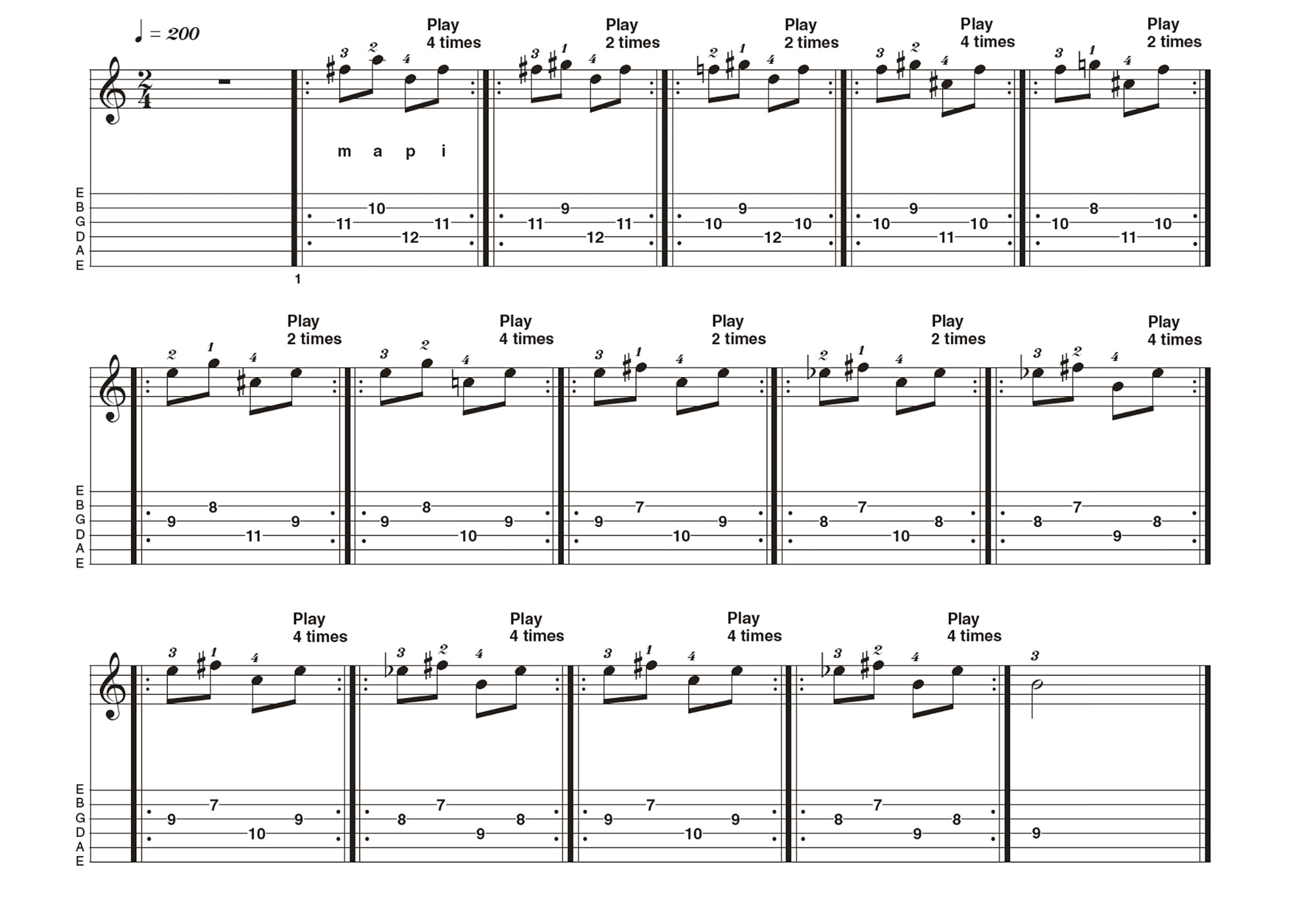
This exercise explores the free stroke plucking hand position that Mancuso uses to achieve cross-string arpeggiation. For fretting-hand stability, keep your fourth finger in contact with the fourth string to make shifts much smoother.
Position your plucking fingers forward so that they are perpendicular above the strings (the open palm gives your fingers somewhere to tuck into after plucking). Also, keep your plucking-hand knuckles static and your fingertips close to the strings.
Exercise 2a and 2b. Stable fretting hand when passing up and down strings via sustained 4th
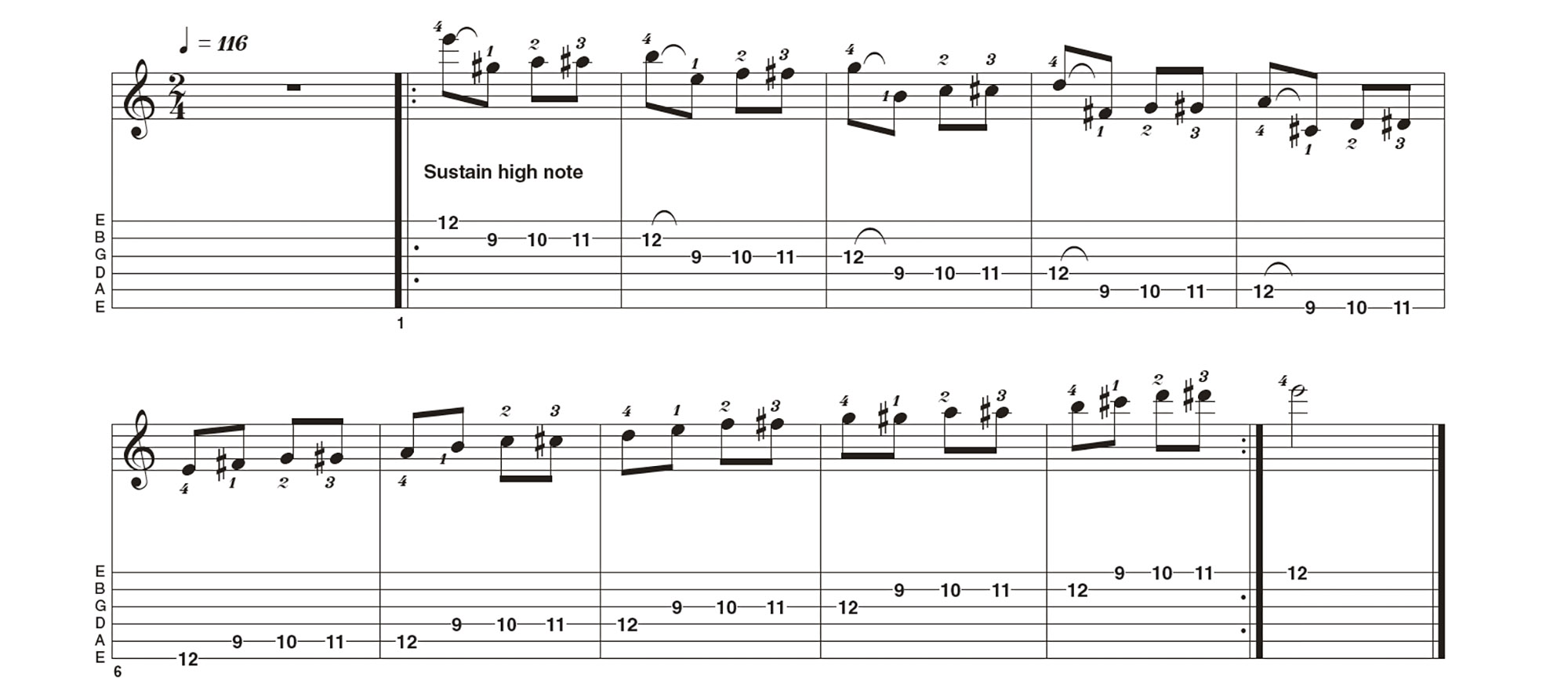
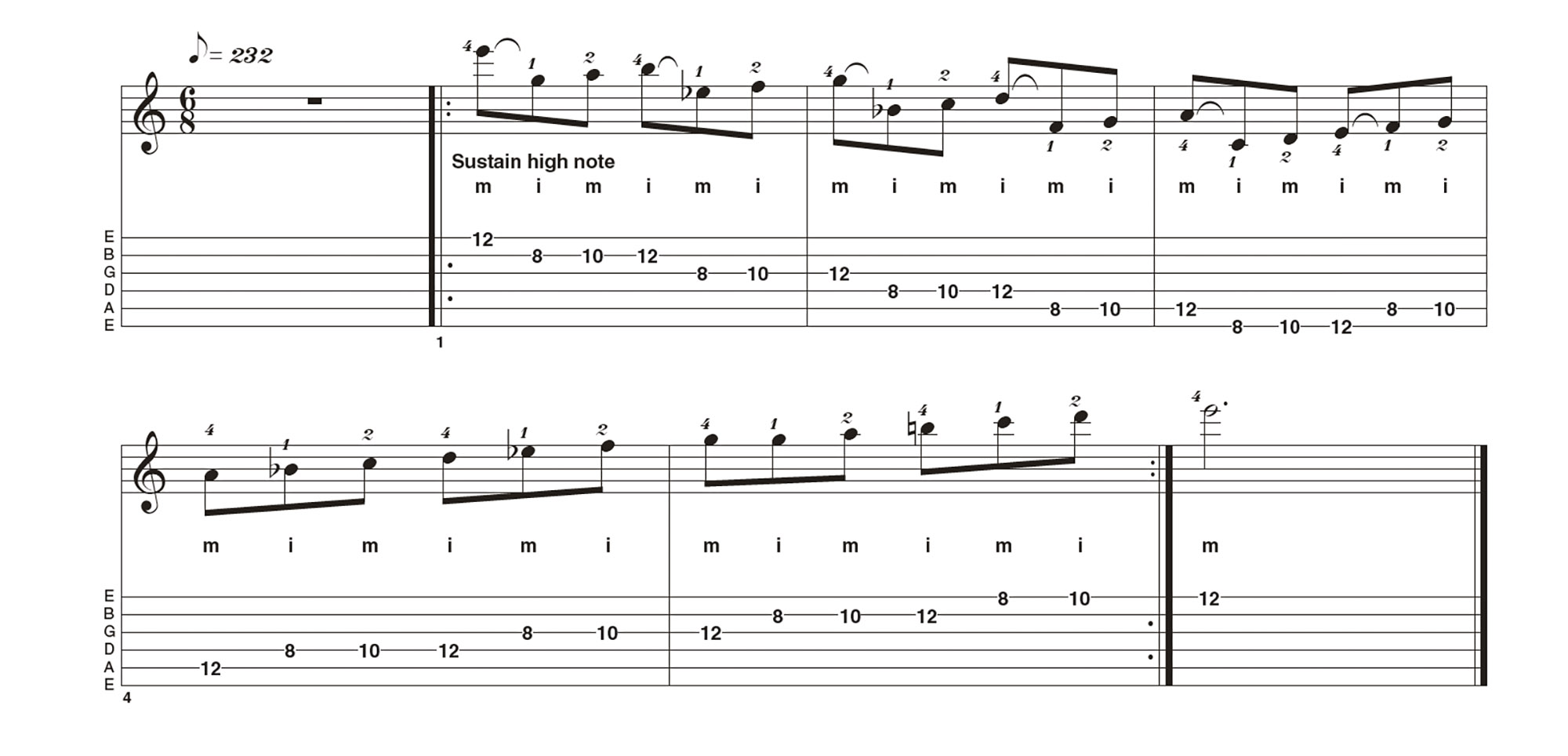
In exercise 2a and 2b, we are exploring the smooth fretting-hand transition Mancuso achieves when moving between strings during scalic passages. Most of us experience the ‘wild fourth finger’ where it can sometimes seem like it has a mind of its own.
In this exercise we will tame the fourth finger by ensuring we hold it down during the three notes that follow each fourth-finger note.
For example in bar 1 of Exercise 2a the fourth finger should be held on its note throughout, we simply repeat this idea for each bar.
Once mastered you should find your entire fretting hand and wrist remain more static when moving around notes on the fretboard from a single position. This is one of the cornerstones of achieving effortless speed (after considerable practice, or course!).
Exercise 3. Syncronising plucking and fretting hands
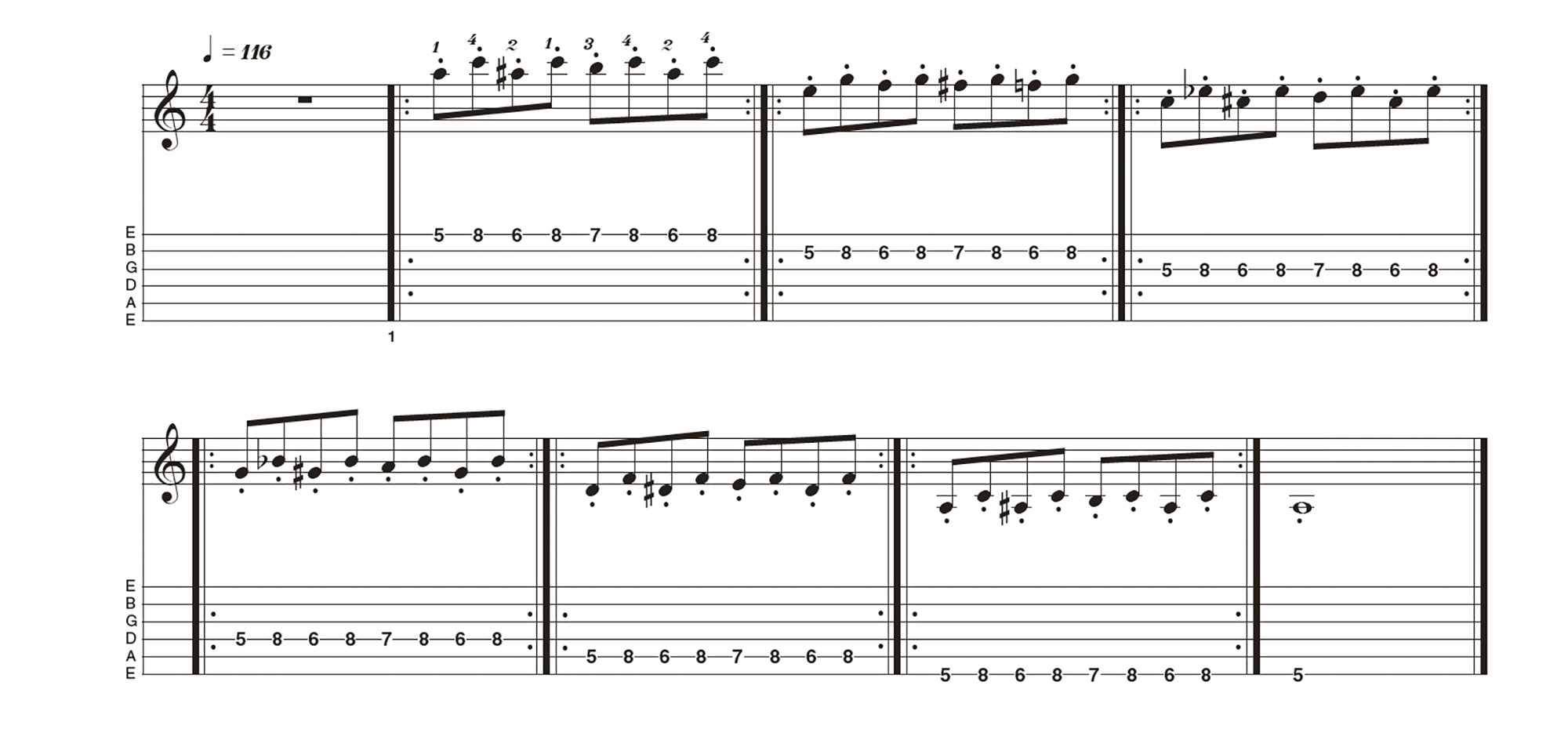
In this exercise, we are simply ‘dabbing’ at staccato notes with speedy finger movements in both hands. The focus should be on timing your finger movements to synchronise perfectly with one another to achieve sharp staccato notes.
Imagine you are trying to tap the string with your fretting hand so each note is released as soon as it sounds, with both hands feeling light and empty as this will help you to execute speedy and nimble ‘twitches’ of the fingers.
Exercise 4. Thee-notes-per-string scales with A-M-I
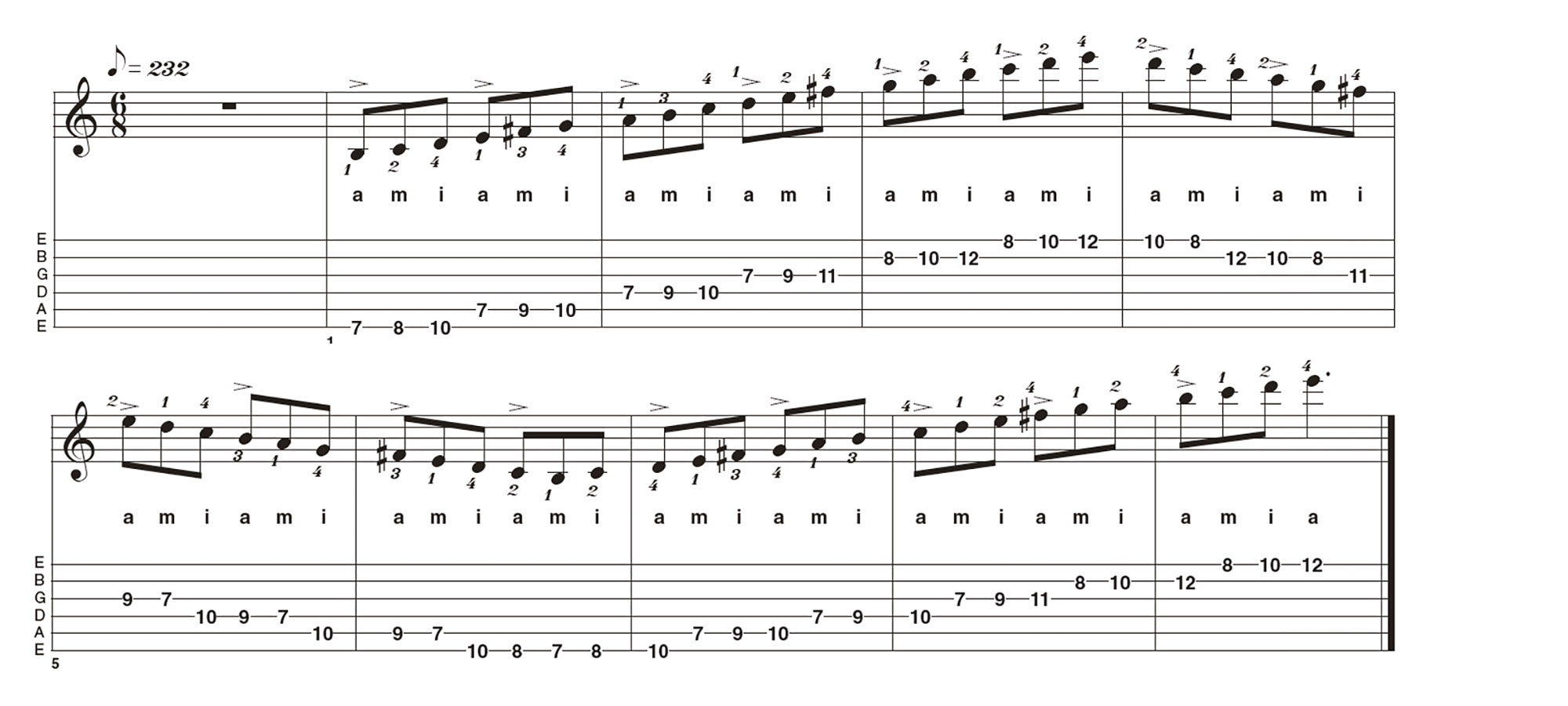
Let’s explore Matteo’s a-m-i plucking style to achieve fast triplets, a specialised technique that takes years to cultivate. Approaching this with just the plucking hand is recommended: play each note as an open string corresponding to whichever string the note is meant to be played on.
This cultivates comfort and consistency. Then bring the fretting hand back in and practise bursts of three to six notes. You should access fast speeds in quite a short time with this approach.
Exercise 5. Proficiency with ascending I and descending M
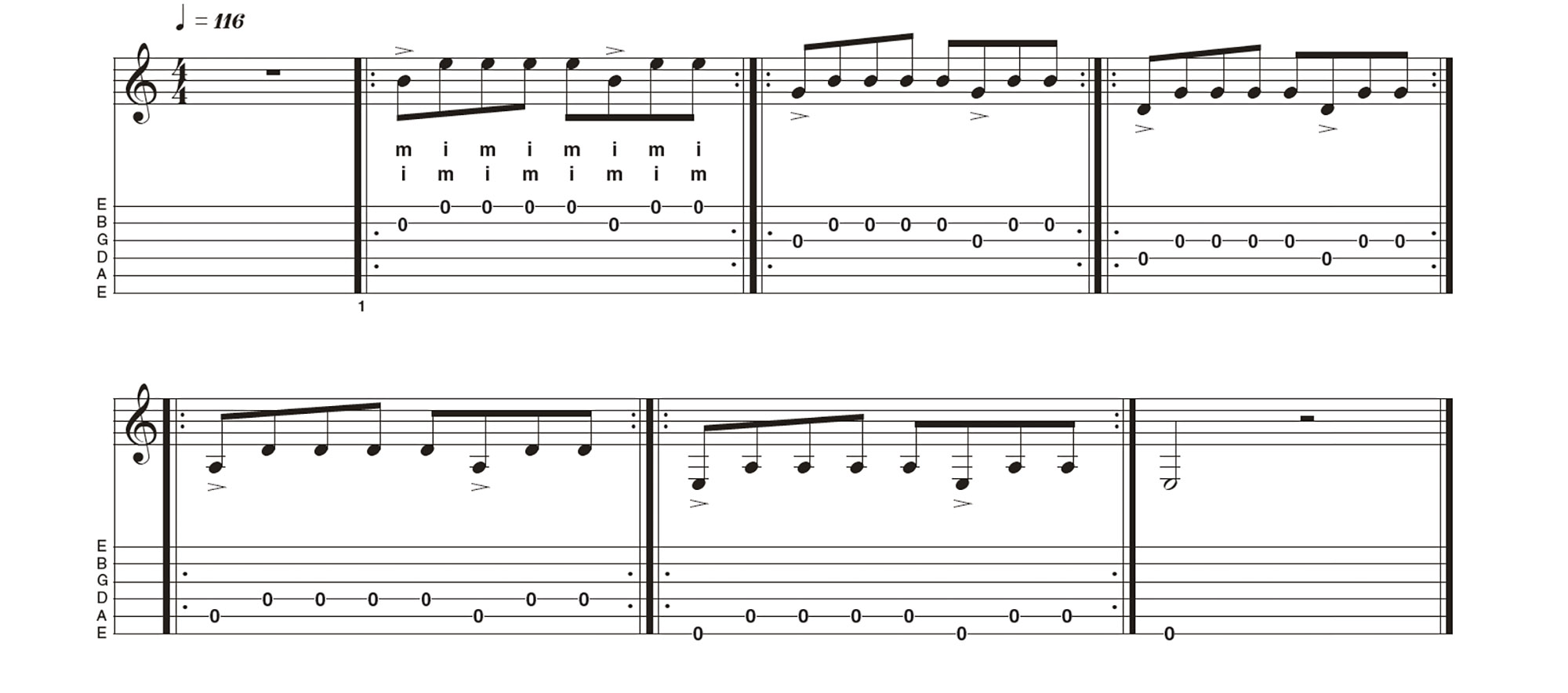
Due to how the plucking hand sits over the strings our first finger lies at a lower string relative to the second finger. This makes it more intuitive to lead with the second digit when ascending a string, the first when descending a string.
When alternating your fingers for linear scalic lines sometimes this isn’t an option and we are forced to lead with the ‘wrong’ finger. This exercise makes it more comfortable to lead with any finger. Practice with both i-m-i-m and m-i-m-i.
Exercise 6. Fretting hand finger independence
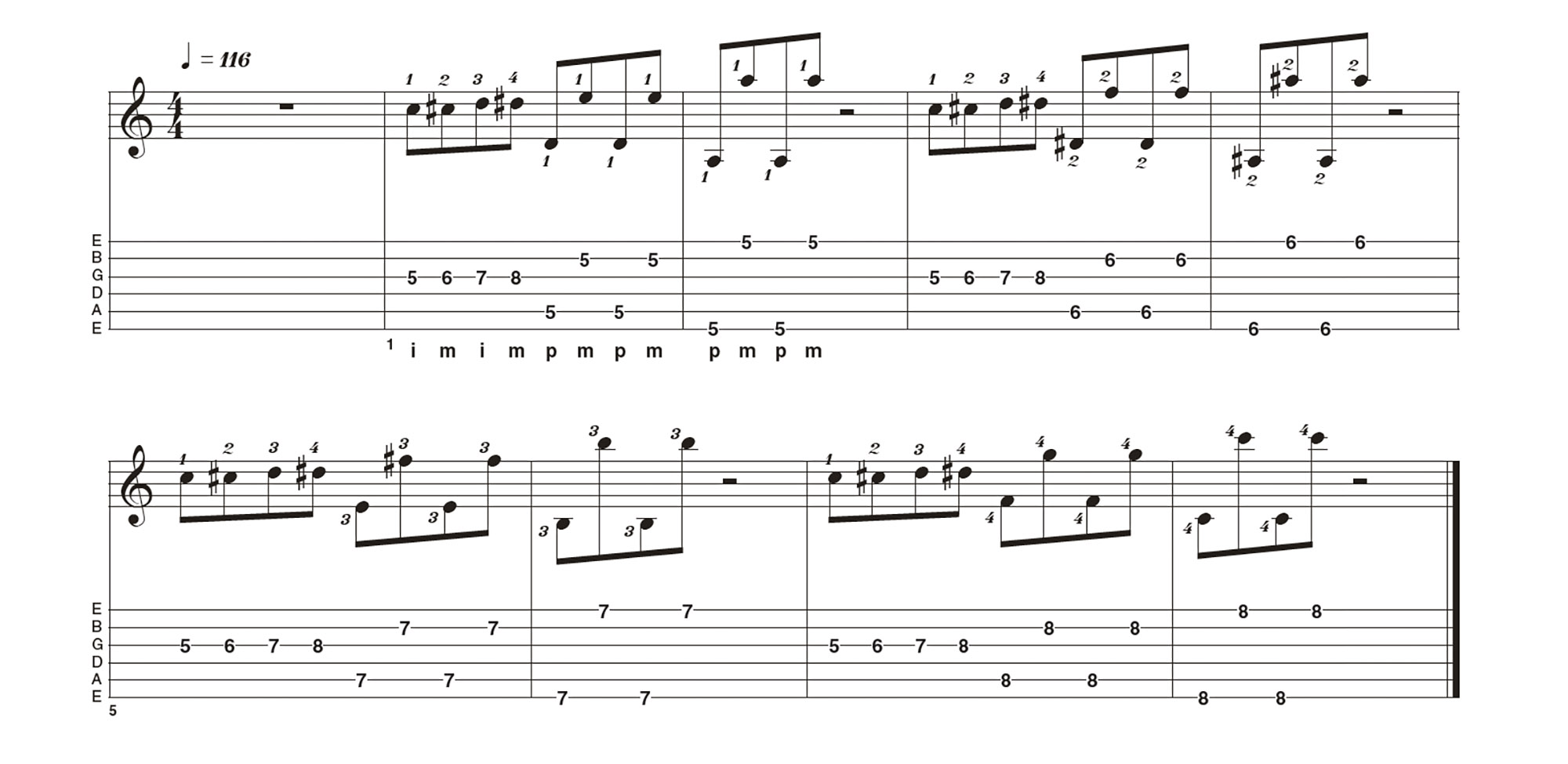
The rule for this exercise is that all adjacent fingers must remain pressed against their frets when the focus finger is leaping up and down the strings. So, in bar 1 the second, third and fourth fingers remain pressed against their notes while the first leaps up and down between notes.
This can induce tension in the fingers so aim to practice vertical movements in slow motion. If you find progress is slow, check out the ‘Click Fix’ as detailed above.


